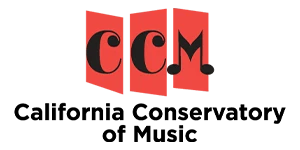March 22, 2023
Approaching Music Education like Learning a Language
The processes of learning an instrument and a language are very similar. Both involve commitment, exposure, and consistency. One of the most significant similarities is that they both require frequent practice to become proficient. Approaching music education like learning a language can be an effective way to learn and develop musical skills.
Similarities Between Music and Language
One of the most obvious connections between music and language is that they both involve communication. In language, we communicate through speaking and writing, while in music, we communicate through sound. However, when you learn how to play an instrument, you are also learning how to read music, which is a language in and of itself! These forms of communication, both musical and linguistic, express emotion, convey ideas, and tell stories.
Both music and language require practice and repetition to become proficient. Learning a language involves listening, speaking, reading, and writing regularly to improve comprehension and fluency. Similarly, learning music involves practicing scales, chords, and techniques to improve performance and musicality. The Suzuki method is very effective because it takes advantage of these similarities. Suzuki students prioritize listening to the Suzuki repertoire and other music to familiarize themselves with their instrument.
Another fun similarity is that music and language both have their own unique grammar and structure. In language, we use syntax, grammar rules, and vocabulary to create sentences and convey meaning. In music, we use harmony, melody, and rhythm to create musical phrases and convey emotion.
Methods for Learning
When learning a language, there are several methods that can be used to improve fluency and comprehension. These methods can also be applied to learning an instrument for an effective education.
Immersion
Immersion involves being surrounded by the language. This looks like watching shows or listening to podcasts in the language you are learning, or traveling to another country. This method is also extremely helpful when applied to music education. For example, attending concerts, watching videos, and listening to music can immerse you in different styles and genres of music. This can help you to develop an ear for different sounds and rhythms, as well as an appreciation for the cultural significance of music.
Practice
One of the most, if not the most, important aspects of learning a language or instrument is regular practice. Regular practice is essential to developing one’s skills, such as physical technique, tone production, rhythm, and more. Setting aside time each day to practice scales, arpeggios, and songs can help you to improve your musical abilities over time. Not only does practice help with progress, it also will help build confidence!
Listening
When learning a language, it’s important to listen to native speakers to improve comprehension and pronunciation. Similarly, when learning music, it’s important to listen to professional musicians to develop an ear for tone, phrasing, and expression. Listening to music can also help you to develop a sense of style and genre, and assist you in finding out what you like!
Reading
Reading is another form of immersion, but it’s important enough to be its own method. With language, reading helps improve comprehension and vocabulary. Similarly, reading sheet music helps musicians improve their sight-reading skills, as well as their understanding of music theory and structure.
Applying Language Acquisition Strategies to Music Education
Build a Solid Foundation
When learning a language, it’s important to start with the basics, such as vocabulary, grammar, and pronunciation. Similarly, when learning an instrument, you must build a strong foundation and review scales, arpeggios, and chord progressions. These fundamentals provide the foundation for more advanced musical skills, such as improvisation and composition.
Imitate
Imitation is a common language acquisition strategy that involves mimicking native speakers to improve pronunciation and fluency. When learning an instrument, you’ll improve by imitating other musicians, or their teachers. This involves listening to recordings, watching videos, and attending concerts. By imitating their phrasing, dynamics, and expression, musicians can learn to play with greater musicality and emotion.
Develop a Music Vocabulary
Just as language learners need to develop a vocabulary of words and phrases, musicians need to develop a musical vocabulary of scales, chords, and tempo markings, and more. It’s important to learn and understand these terms early on so that you can continue to make steady technical progress.
Practice Regularly
Regular practice is essential. To make progress, musicians should set aside dedicated time each day to practice their instrument and work on improving their skills. This regular practice can help to develop muscle memory and improve technical proficiency, as well as build confidence and musicality. Practice sessions that are only 10-minutes are still more beneficial than none at all!
Get Feedback
Getting feedback on your performance can help you to identify areas for improvement and refine your technique and musicality. This feedback can come from teachers, peers, and parents, or even from recording and listening to your own performances.
Approaching music education like learning a language is an effective way to learn an instrument and enjoy doing it! Whether you’re a beginner or an experienced musician, applying these strategies can help you reach new levels of musical ability and creativity.
Sign up for your free lesson at the California Conservatory of Music!

